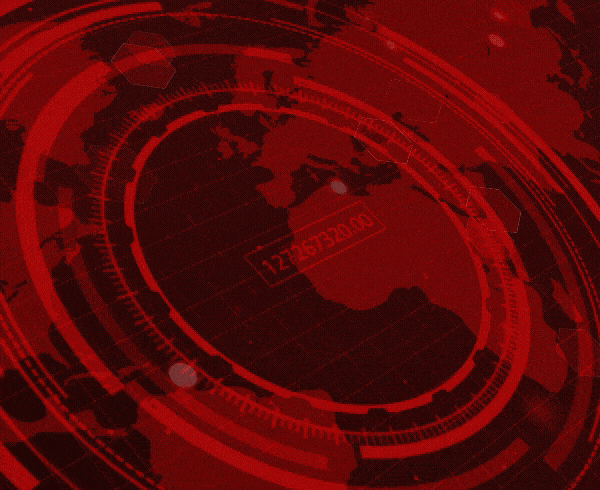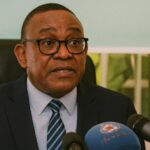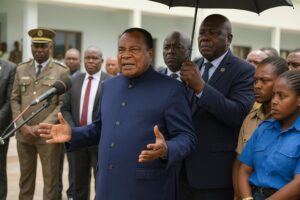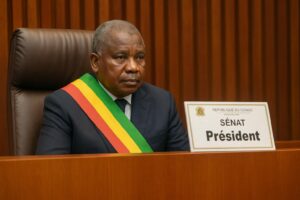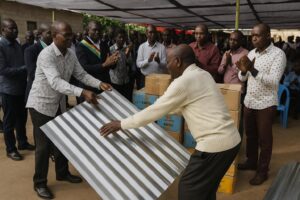An Electoral Cartography of Unprecedented Precision
When the Congolese Ministry of the Interior quietly published its latest decree, seasoned diplomats in Brazzaville took note. The document, signed by Minister Raymond-Zéphirin Mboulou and circulated to prefects earlier this week, stipulates the installation of 1 478 registration bureaux, 4 011 voting centres and exactly 6 620 polling stations across the twelve departments and three inter-district areas of the Republic of Congo. The announcement, less than two years before the constitutionally scheduled presidential poll of 2026, constitutes the most granular mapping exercise undertaken since the introduction of multiparty politics in the early 1990s. Observers from the Economic Community of Central African States (ECCAS) have already described the cartography as “a significant stride toward operational predictability” (ECCAS electoral assessment, 2024).
Institutional Engineering Behind the Numbers
Beyond the headline figures, the decree outlines an intricate governance structure. Each registration office will be chaired by a senior civil servant, assisted by a secretary and eight commissioners drawn in equal measure from the governing coalition, recognised opposition parties, centrist formations, civil-society platforms and traditional authorities. Prefects are empowered to formalise nominations, a provision that—according to the National School of Administration in Brazzaville—ensures “both vertical accountability to the state and horizontal scrutiny among political stakeholders” (ENA policy brief, 2023).
The decision to anchor the process in the prefectural hierarchy rather than a stand-alone electoral commission aligns with the constitutional architecture reaffirmed by the 2015 referendum. Foreign chancelleries acknowledge that this choice consolidates administrative efficiency while avoiding jurisdictional overlap with the Independent National Election Commission, whose mandate remains limited to result tabulation and dispute resolution.
Technological Innovations and Voter Registry Integrity
Congo-Brazzaville’s path toward the 2026 vote is not solely bureaucratic. Authorities have confirmed that biometric kits supplied by a Franco-South African consortium will be deployed in all registration bureaux. The same technology was tested on a pilot basis during the 2022 legislative by-elections in Ouesso, yielding what the International Organisation of La Francophonie called “encouraging enrolment accuracy” (OIF field report, 2022).
Under the new arrangement, data captured at registration sites will be timestamped, geopositioned and encrypted before transmission to a central server in Brazzaville. According to the Ministry’s IT director, Colonel Armand Ndinga, this protocol “closes the loopholes of multiple enrolment and ghost voters that critics have long alleged”. For the first time, a public audit is scheduled: a statistical sample of voter rolls will be published online ninety days prior to polling, allowing parties and civic groups to submit challenges.
Diplomatic Stakeholders Monitor the Preparations
International partners, mindful of Congo’s strategic position on the Gulf of Guinea and its reputation for diplomatic mediation in Central Africa, are following the preparations with quiet interest. The European Union’s chargé d’affaires told this magazine that Brussels is “ready to deploy a technical needs-assessment mission upon invitation”, while Beijing’s embassy, a major supporter of digital infrastructure in Brazzaville, is reportedly advising on cybersecurity protocols. The United Nations Development Programme, which co-financed voter-education campaigns in 2021, has earmarked two million dollars for civic-engagement grants targeting women and first-time voters. Meanwhile, the African Union’s Peace and Security Council, in a communiqué released from Addis Ababa last month, welcomed the decree as “part of Congo’s sustained commitment to peaceful constitutional continuity.”
Socio-Political Context and the Sassou Nguesso Factor
President Denis Sassou Nguesso, now in his fourth elected term, remains a pivotal figure. His government frames the 2026 ballot as a validation of long-term stability policies, from the Pointe-Noire Special Economic Zone to hydrocarbon revenue management reforms. Domestic opposition parties, though diverse, have so far responded cautiously, demanding broad access to registration centres in remote districts such as Likouala and Lékoumou. Civil-society leader Albert Ingani, speaking on Radio Congo, conceded that “the numeric clarity of the decree is reassuring” while urging equitable deployment of materials. For the diplomatic corps, the interplay between administrative vigilance and political consensus will determine whether the election replicates the relative calm of 2021 or the charged atmosphere of earlier cycles.
Looking Ahead to a Peaceful Poll
In the months ahead, attention will shift from cartographic design to practical execution: training of nearly 75 000 poll workers, distribution of sensitive materials over 120 000 square kilometres of territory, and the delicate task of coordinating security forces under the tripartite framework signed between the Interior, Defence and Human Rights ministries. Should the time-tables be respected, the final voter list will be sealed by December 2025, giving parties ample opportunity to campaign under the regulations promulgated last year that limit public-order permits to forty-eight hours’ notice.
From a diplomatic standpoint, the decree’s meticulous enumeration speaks to a broader narrative: Congo-Brazzaville is intent on demonstrating that electoral management can be both centrally directed and inclusively monitored. For now, 6 620 polling stations stand as more than mere dots on an administrative map; they are symbols of an evolving contract between state and citizen, one that regional stability and foreign investors alike will watch with vested interest.







